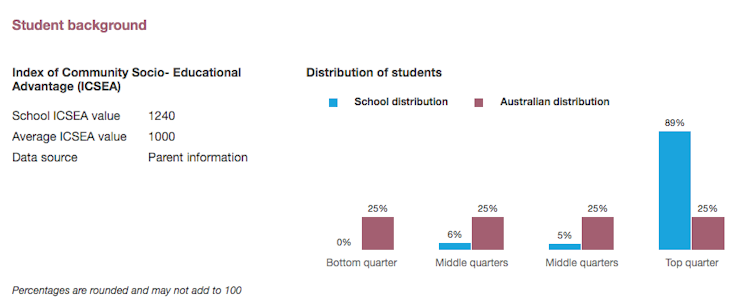Selective schools mainly ‘select’ advantage, so another one won’t ease Sydney’s growing pains
GUEST OBSERVATION
NSW Premier Gladys Berejiklian has re-ignited the ongoing debate about selective schools by announcing a new selective school will be built in the “key growth area” of southwest Sydney. In announcing the school, the premier said: "There is strong demand for selective schools, with around 15,000 applications for only 4,200 places. This new school will provide another convenient local option for these students and their families."
But selective schools are never a “local option”. Selective school entry is open to anyone who meets the cut-off in the admissions test, regardless of where they live. Selective school students routinely travel for hours across Sydney to get to and from school.
And despite claims selective schools provide opportunities for gifted students across all socioeconomic backgrounds, the data actually show otherwise – selective schools are mainly comprised of advantaged students.
What are selective schools?
Fully selective schools have no catchment zones like other public schools. This means students in southwest Sydney will receive no priority when they seek admission to this new school. So, despite claims the school is needed to cater for population growth in this area, this school will never be a local school.
Selective high schools are public schools that cater for high-achieving, gifted students. NSW has more selective schools than the rest of the states combined. This new one will be the 49th if both both fully and partially selective schools are included. Victoria has only four selective schools, Queensland three and Western Australia one.
\Each year, selective schools dominate the HSC leader boards, comprising virtually all the top ten performing schools in NSW. These remarkable outcomes come from grouping together high-achieving, gifted students, and teaching them using specialised methods and materials.
The positive aspects lie in selective school students spurring each other on to reach their potential. And sometimes in a comprehensive school gifted students are bored or bullied. But the disparity selective schools create outweighs the benefits.
They ‘select’ the most advantaged
An average of 73% of students in NSW’s fully selective schools came from the highest quarter of socio-educational advantage (SEA) in 2016. The SEA is based on factors shown to have an impact on students’ educational outcomes, such as parents’ occupation and education.
At NSW’s highest-scoring school, James Ruse Agricultural High School, 89% of students came from the top SEA quarter in 2016. Only an average 2% of students across all of NSW’s fully selective schools came from the lowest SEA quarter.
James Ruse Agricultural College student profile 2016. MySchool (screenshot)
Gifted students do exist in lower-income families and research shows they are underachieving due to lack of opportunity – but selective schools don’t seem to be the answer. The data on selective schools show gifted students from disadvantaged backgrounds are being locked out of the selective system.
In fact, students in selective schools are now so advantaged they surpass those in many high-fee private schools. The My School website calculates an Index of Socio-Educational Advantage (ICSEA) for each school in Australia. ICSEA is set at an average of 1,000 across Australia. The higher the ICSEA, the higher the level of educational advantage of students attending the school.
As the table below shows, in 2016 just over half of the 20 most advantaged high schools in NSW were selective schools.
They don’t reflect the community
Selective schools don’t reflect the communities in which they are located, meaning they are not the “local option” Berejiklian hopes the new school will be.
While public schools have traditionally been local community hubs, exposing students to the full range of diversity in their neighbourhoods, selective schools are not able to fulfil that function. Their level of advantage almost always exceeds that of other local schools. And this is true in wealthy as well as lower-income areas.
As the table below shows, ICSEA scores for selective schools in Penrith, Campbelltown, Gosford, Newcastle and Wollongong far surpassed those of surrounding local schools.
Selective schools also don’t reflect the ethnic composition of our community and are overwhelmingly dominated by students from language backgrounds other than English (LBOTE). On average, 83% of students in Sydney’s fully selective schools were from a LBOTE in 2017. At James Ruse, the figure was 97%.
James Ruse Agricultural College student profile 2017. MySchool (screenshot)
Most selective school students are children of skilled migrants, particularly from Asia, who tend to be highly educated and who invest heavily in their children’s education. This includes paying for many hours of private tutoring, especially in the lead-up to the selective schools admission test.
The use of tutoring to secure a competitive edge is another barrier preventing lower-income families from accessing the selective system.
High-achieving students need more access to educational programs that will enable them to reach their full potential. But this new selective school is not the solution.![]()
Christina Ho, Senior Lecturer, Social & Political Sciences, University of Technology Sydney
This article is republished from The Conversation under a Creative Commons license. Read the original article.




